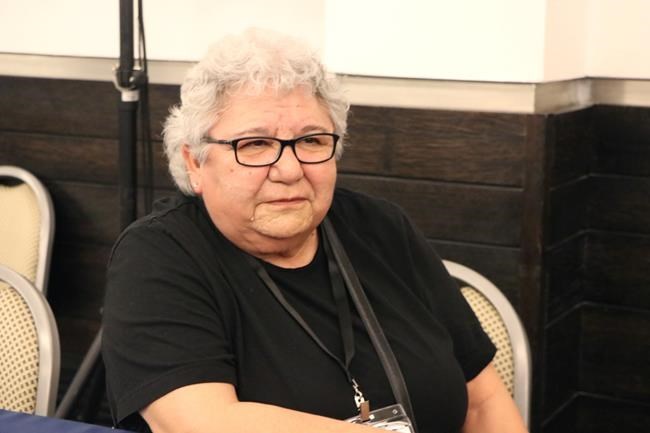ROME — Marie-Anne Day Walker-Pelletier sat down in a taxi as she left a private tour of the Vatican Museums and fell deep into thought.
"We are in 2022 and our history is being stored and shown in other countries where nobody understands," the retired chief of Okanese First Nation in Saskatchewan pondered out loud Tuesday.
"Those items, those artifacts … those are ours. Those belong in our communities. They belong to people. They belong to generations."
Indigenous delegates who have travelled to Rome to meet with Pope Francis were given access to the Anima Mundi Ethnological Museum, which includes some of the Vatican’s collection of Indigenous artifacts.
Some of that collection has not been seen publicly in decades or ever.
Walker-Pelletier, a residential school survivor, said she looked at the objects and thought about how artifacts speak truth to life, history and the communities of Indigenous people.
If the Roman Catholic Church is committed to truth and reconciliation, she said, it must make the collection open as well.
"That’s one of the things the Pope needs to look at, how does he reconcile and bring back the artifacts," Walker-Pelletier said.
Indigenous curators and experts have said they have been unable to get access to the unknown number of objects in the church’s possession.
Much of the Vatican’s current collection is from a former pope who decided to hold a world exposition in 1925. A message went out at that time to missionaries around the globe to send items. More than 100,000 objects and works of art were displayed.
The Vatican has said parts of its collection were gifts to popes and the church. In 2019, the Pope committed to putting many more objects on display, including those of Indigenous people.
The collection is known to contain masks, wampum belts, pipes and rugs, as well as other items from Indigenous communities in North America.
Delegates on Tuesday saw a rare kayak made by Inuvialuit. The Inuvialuit Regional Corp. requested last year that it be returned.
There were also embroidered gloves from a Cree community, a baby belt from a Gwich'in community, moccasins from British Columbia, and many other items on display for the delegates.
Many objects were taken away from Indigenous people after the Canadian government outlawed cultural practices through the Indian Act in 1876. Ceremonial items and other important objects were seized, then sold, given to museums or destroyed.
Kukpi7 Chief Rosanne Casimir of the Tk’emlúps te Secwépemc First Nation in British Columbia, said she was conflicted walking through the collection. During her time in Rome she has felt so far from home and everything is so different.
“It was, in a sense, it was a little bit of a feeling of back home," Casimir said in describing how she felt in the museum.
She said she wished she had more time to muse on the objects and to take photos. She knows many people in her home community were interested in what the Vatican had.
Global outrage was sparked last year after Tk’emlúps te Secwépemc announced that potential unmarked graves had been found at the former residential school.
Casimir said she joined the delegation to get information and make a difference and further healing for her community.
"So far today I feel good about what I’m doing."
She and other First Nations delegates are to meet Francis on Thursday. Métis and Inuit delegates met with him Monday.
The Canadian Conference of Catholic Bishops said in a statement that the artifacts represent across-sectionof works by Indigenous artists from various regions of Canada. The bishops said they have been preserved as part of a broader commitment to inclusiveness and dialogue, and "to celebrating diverse cultures around the world."
The bishops said the Oceania region exhibit was developed in collaboration with Indigenous People. The group added the North American exhibit, which would include the Indigenous artifacts from Canada, has not yet been developed. The bishops indicated the Vatican is open to working with Indigenous communities to talk about the future of the items and whether they should be displayed or repatriated.
"So the items that the delegates were shown today were presented simply along with the information the museum currently has about their provenance and history," the bishops said.
Mitch Case, a historian who is also a regional councillor with Métis Nation Ontario, said he didn't see any identified Métis items.
"I don't think that's because there aren't Métis things there," Case said.
Case said around the time the items were being collected most Métis communities were devoutly Catholic. He wondered why, if there are Métis items, they weren't on display knowing the delegation was coming.
He said it demonstrates why transparency about collections is extremely important.
"Because we don't know what's in there, I can't make any judgment whether it was deliberate. I just don't know."
This report by The Canadian Press was first published March 29, 2022.
Kelly Geraldine Malone, The Canadian Press




